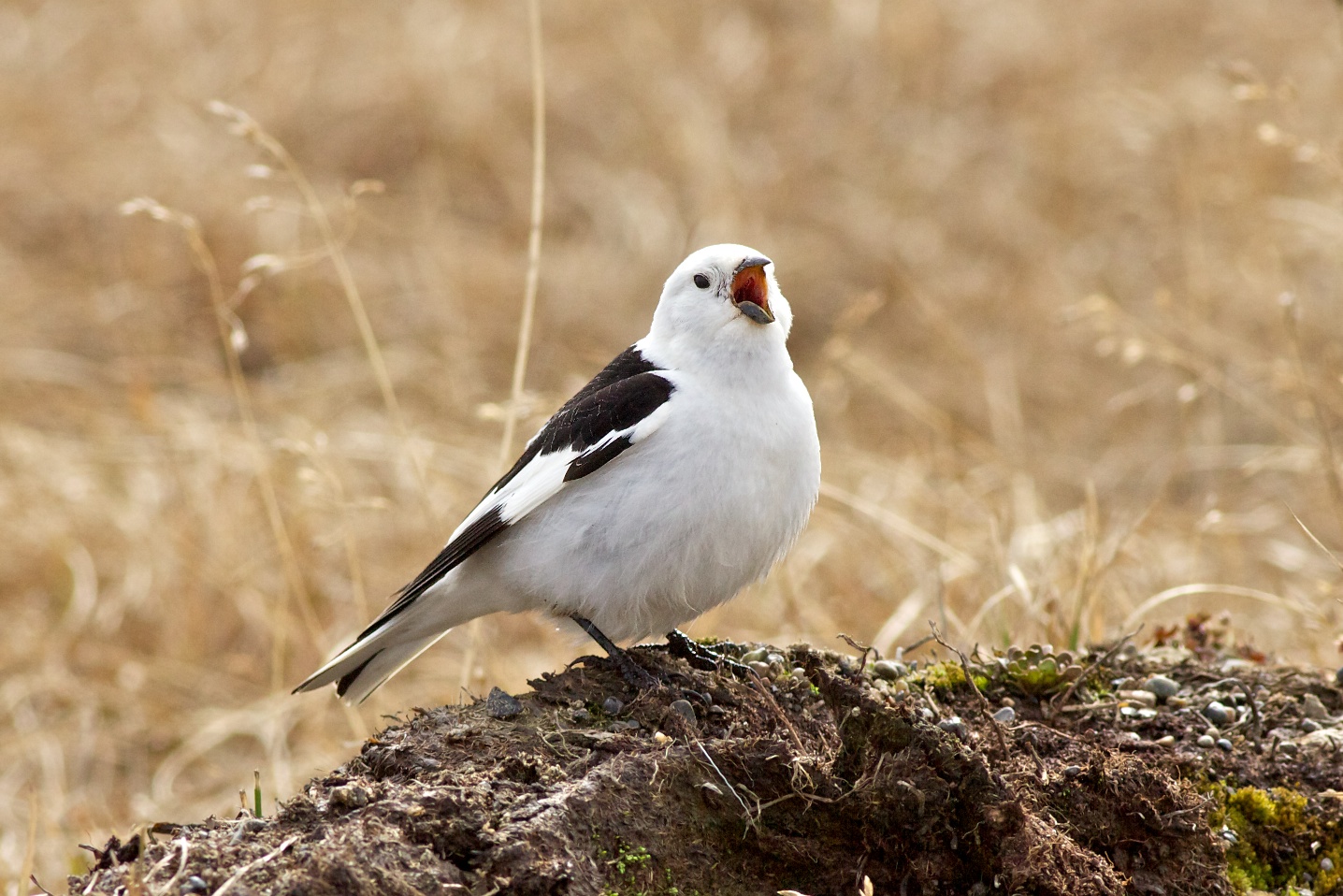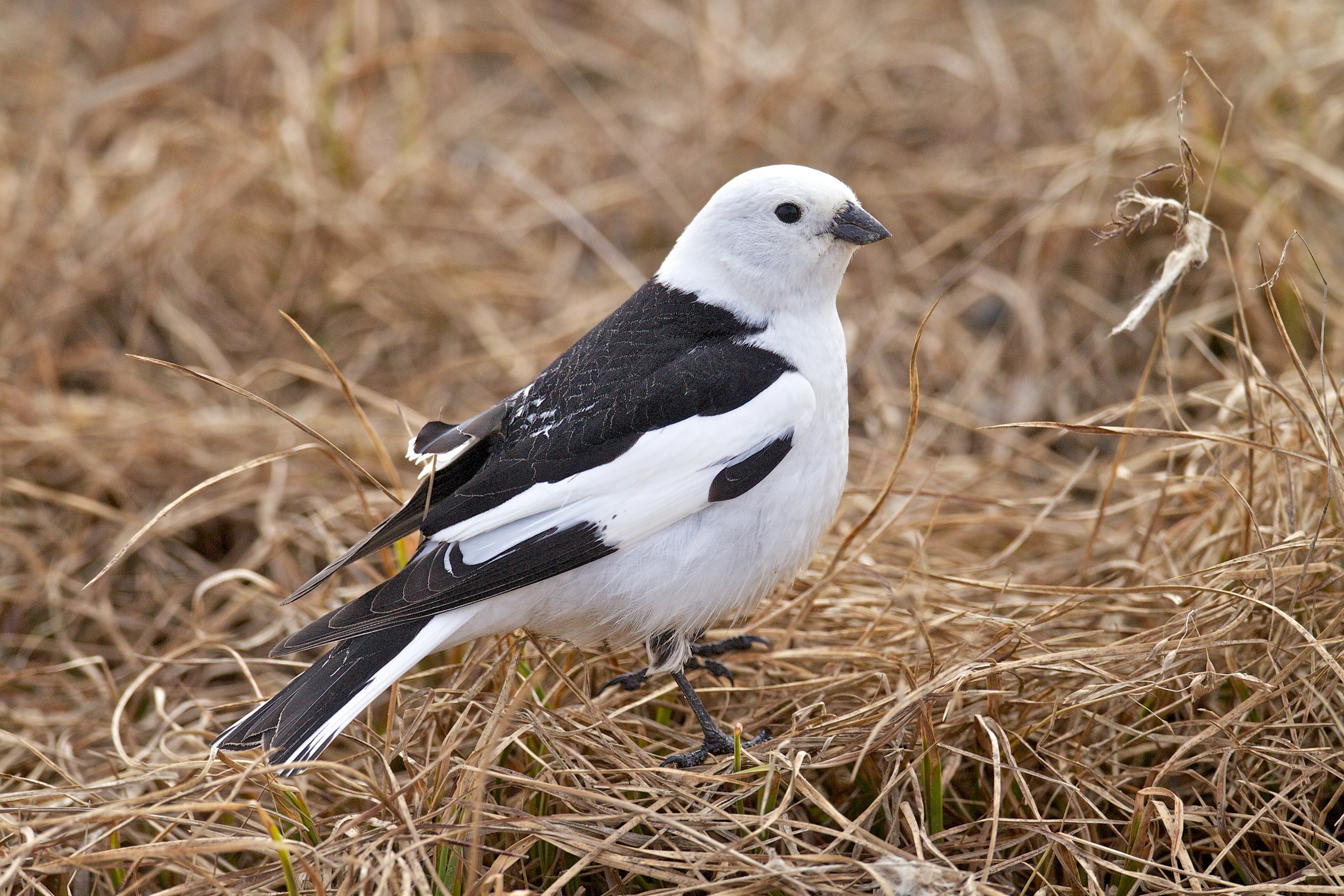
Plectrophenax nivalis
TAXONOMY
Emberiza nivalis Linnaeus 1758, Lapland. Two subspecies.
OTHER COMMON NAMES
English: Snowflake, snowbird; French: Bruant blanc; German:
Schneeammer; Spanish: Escribano Nival.
PHYSICAL CHARACTERISTICS
6–7.5 in (15–19 cm); 1.5 oz (42 g). Sexes differ in color. Males
in summer have a white head, a black back sometimes mottled
with brown, a black rump mottled with white, white outer tail
feathers partially tipped with black, and white underparts. In
winter, the white areas are washed with pale rusty brown.
Females in summer resemble breeding males, but the crown is
dusky and black areas are paler, often brownish. In winter they
resemble winter males. Juveniles are grayish with pale bellies.
DISTRIBUTION
Circumpolar. Breeds from Iceland, northern Scotland, the
mountains of Norway and Sweden, Spitzbergen, Franz Joseph
Land, north Kola Peninsula, Novaya Zemlya, northern Russia
and northern Siberia east to Wrangel Island, the Bering Strait,
and south to east Kamchatka, northern Alaska and mountains
of Alaska, northern Canada north to Labrador, and the coast
of Greenland. Winters south to British Isles, coast of northern
France, Denmark, Germany, Poland, southern Russia,
Manchuria, Korea, Kuril Islands, and Hokkaido–, and in North
America to western and southern Alaska and from central and
southern Canada south along the Pacific coast to northern
California, the central Plains, and coastal North Carolina. P. n.
insulae breeds in Iceland, and P. n. vlasowae breeds in northeast
Russia east through Siberia and to the Bering Strait.
HABITAT
Breed in the high Arctic in sparse, dry, rocky areas such as
shores, mountain slopes, and rocky outcrops. During migration
and winter they are characteristically found in field, pastures,
roadsides, and along the shore.
BEHAVIOR
Males arrive on the breeding grounds well before females.
When the weather begins to warm, they establish territories,
and chasing, flight-singing, and fights are common. When on
the ground, they run rather than hop. In winter they are often
found in fairly large flocks. As they move through a field, they
appear to roll along like blowing snow as the birds at the back
of the flock leap-frog over those toward the front. Although
they generally stay on the ground, they sometimes will fly up
into a tree. They are sometimes associated with horned larks
(Eremophila alpestris) and Lapland longspurs (Calcarius
lapponicus).
FEEDING ECOLOGY AND DIET
They feed on the ground. In summer they take insects and
other invertebrates, but in winter they eat principally seeds
and grain.
REPRODUCTIVE BIOLOGY
Most are monogamous, but individuals of either sex may have
two mates. Nesting takes place from late May through July.
The nest, which is a large thick-walled bulky cup of dried
sedges, grasses, and lichens, is placed on the ground, often in a
crevice in rocks. They lay three to nine (usually four to seven)
eggs. Incubation lasts 10–15 days, and the young fledge after
10–17 days. Both parents feed the young.
CONSERVATION STATUS
Not threatened.
SIGNIFICANCE TO HUMANS
None known.
Photo Gallery of - Snow bunting




 Animalia Life
Animalia Life